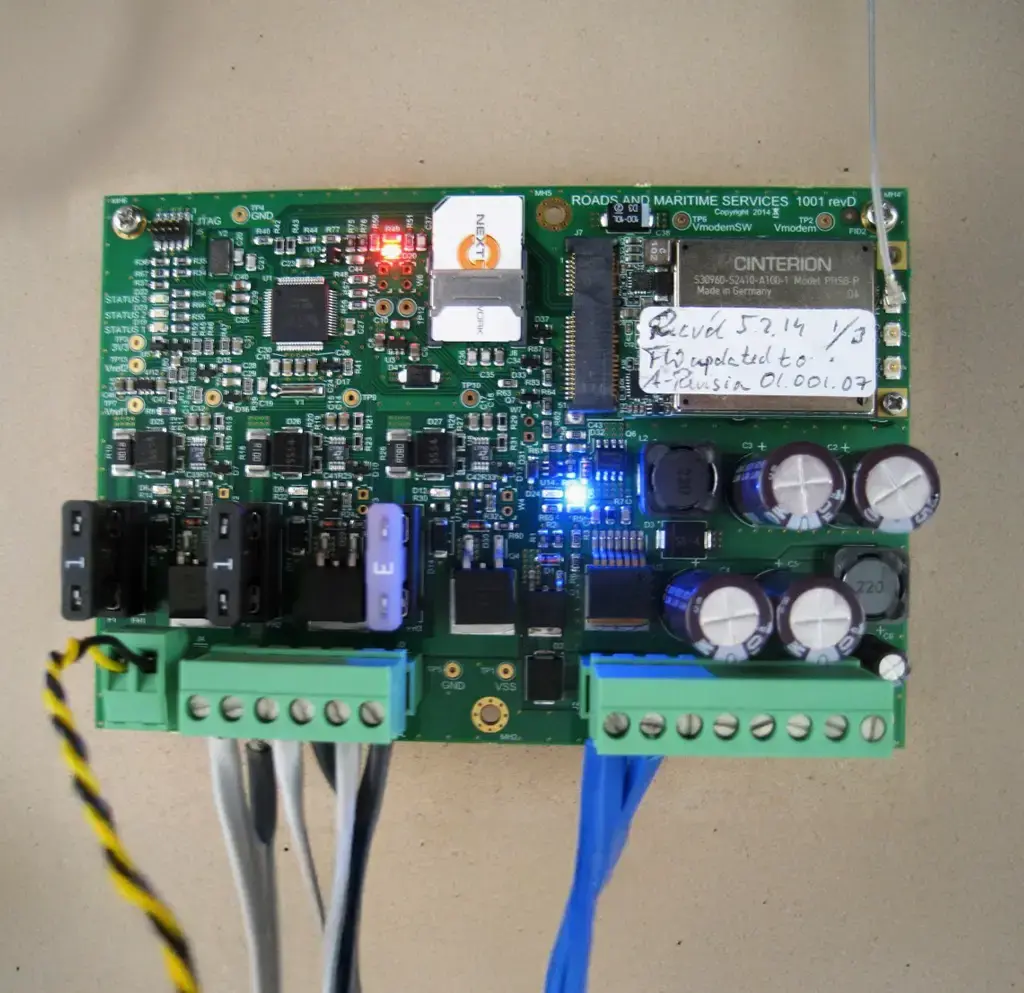
Challenge
In Australia, a local government implemented a ‘safety around schools’ initiative that includes a variable speed zone on roads near school entrances, but compliance with speed zones has been lacking.
Outcome
We collaborated with the agency that maintains road infrastructure to implement a series of Intelligent Transport Systems (ITS) to alert drivers of the speed limit around school zones, driving up compliance to these limits.
The ITS systems are known as School Zone Alert Systems (SZAS). We have developed a next-generation component for the SZAS by employing an advanced MCU solution that unifies the functionality of two previously separate modules into a single unit. The consolidated design enhances overall reliability by minimising potential failure points and is fully compliant with our stringent quality control protocols. As a result, customers can be assured of an adequate on-shelf lifetime, effectively mitigating the risk of production disruptions due to component obsolescence.

The SZAS consist of the following main parts:
- The Central Management Computer (CMC) provides a central point for configuring and real-time monitoring of the local displays around the school zones within the state. It downloads a timetable in each of the street signs for a whole year of operation.
- The timetable specifies when the sign must start and stop the operation within each day of the year, taking into account school holidays, public holidays and weekends.
- The CMC receives and handles any alarms from the street signs including events like low battery voltage, unexpected restarts and intrusion by opening the device door, etc.
- The Sign Controller (SC) is the locally installed intelligent unit that communicates (via 3G/4G mobile network or satellite) with the CMC and drives the speed zone displays.
- The SC manages the local runtime environment and monitors all sort of sensors such as battery level, display current, network signal strength and intrusion detection.

We were responsible for the system design and development, verification and customer field support for the next-gen SCs, also known as Alert Device Controller.
Throughout the entire design lifecycle, from high-level system architecture and detailed hardware schematics to firmware implementation and comprehensive test planning, we maintained an unwavering focus on product quality. Our system design phase established clear performance and reliability targets. In the hardware design stage, we optimised signal integrity and thermal management to minimise failure modes. Concurrently, our firmware team developed modular, well-documented code and leveraged automated unit tests. We then constructed a dedicated test setup for hardware verification and firmware verification, ensuring each board revision met stringent criteria. Finally, end-to-end system testing validated interoperability, environmental resilience, and long-term stability.
To further strengthen security and cost reduction, we replaced the proprietary OS with an open-source alternative. This change enhances transparency for third-party security audits and lowers total cost of ownership without compromising performance. The consolidated design remains fully compliant with our rigorous quality-control protocols, assuring customers of a robust on-shelf lifetime and mitigating the risk of production disruptions due to component obsolescence.

We also implemented, tested and deployed the Modem Firmware Upgrade Over the Air (FOTA) for the 4G modem used in the Sign Controllers. The actual SC firmware can also be upgraded over the air.
We provide continuous support and maintenance of the Firmware of the Sign Controllers under a contractual agreement. We handle any Trouble Reports in a timely manner by analysing the reported issue and releasing corrections. We implement, test and release any Change Requests raised by the client after discussing and clarifying the details with the client and finding the best solution. We also propose improvements which, if accepted, we implement, test and deploy.

The Endava-developed SC enables our client to:
- Remotely control the operation of all School Zone Signs across the state from one Central Management Computer
- Remotely monitor the operational status of all Signs (including display health, battery health, signal strength etc)
- Promptly respond to issues (e.g. display failure) that are immediately reported by the SCs
- Prepare accurate and timely performance/service delivery reports for the operation of the SZAS.
These new SCs allow for full remote monitoring and control and are being deployed across 6800 sites over a wide area, which has transformed the ability to implement safer speed management around school entrances.
Explore the industry
Technology
Give your technology the push it needs to reach the next level of efficiency – and break new ground!

Check out our capabilities
Interesting? We love when people share.